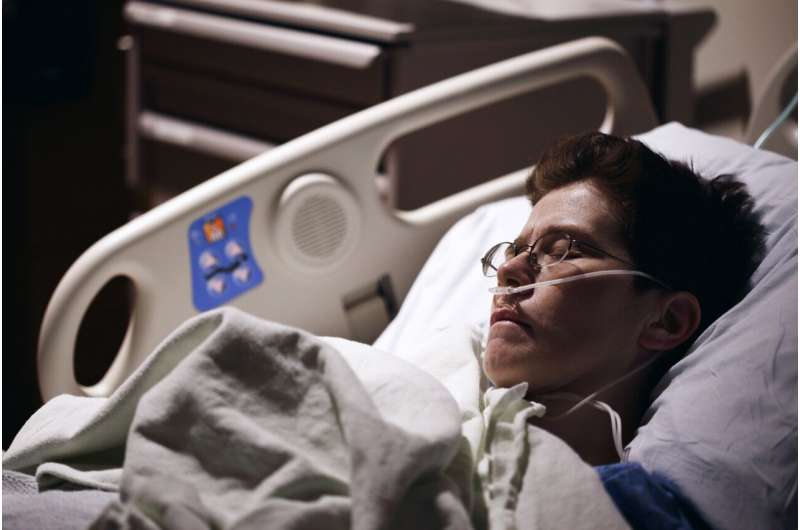Credit: Unsplash/CC0 Public Domain
In the intensive care unit (ICU), critically ill patients are cared for by a multidisciplinary care team. Compassionate and caring behaviors on the part of the care team result in better outcomes for patients and their families, and care providers entering the demanding field of medicine because they wish to help people and relieve suffering. However, studies have demonstrated deficiencies in delivering compassionate health care. Evidence suggests that physicians may miss up to 90% of opportunities to respond to patients with compassion.
To determine what factors drive and enhance compassionate care behaviors in the ICU setting and which factors drain and negate caring attitudes and behaviors, Shahla Siddiqui, MD, MSc, FCCM, and a colleague conducted an observational, qualitative study of an international panel of intensive and critical care providers. The researcher-clinicians report in PLOS ONE that while ICU physicians and nurses feel a deep moral imperative to deliver the highest level of compassionate care, pressures of capacity strain, lack of staff, lack of compassionate skills training and a heavy emphasis on electronic health record maintenance present significant hurdles to achieving that goal.
"Studies done on physician compassion from a patient perspective emphasize listening and awareness of the patient's emotional state, which not only builds trust within the patient-physician relationship but also enhances resilience amongst the care team and prevents burnout," said Siddiqui, an anesthesiologist at BIDMC. "Our aim was to describe compassionate behaviors in the ICU, study the factors that enhance and those that drain such behaviors with an aim to enable recommendations for practice and training."
Siddiqui and co-author Christiane Hartog, MD, of Charité Universitätsmedizin, Berlin, showed two scripted video vignettes to 25 participants in three virtual focus groups conducted over an online platform. Participants (24 physicians and one ICU nurse) were invited via an email to members of the European Society of Intensive Care Medicine and the Society of Critical Care Medicine to participate in their qualitative study. The two videos chronicled fictional interactions around end-of-life care of a Black patient who had expressed the desire not to receive life prolonging measures. In one video, the attending physician was portrayed as compassionate, inclusive and kind; in the second, he was shown as distracted, dismissive and did not appear to care about the patient's wishes and preferences.
The participants, divided into three focus groups, were interviewed by the principal investigators. When Siddiqui and Hartog analyzed the focus groups' transcripts, strong trends emerged.
"Most clinicians felt the moral imperative to 'do good,' and to spend time forming important human connections with patients and families," said Siddiqui, who is also an assistant professor of anesthesia at Harvard Medical School. "However, participants recognized that the health care system, with its inherent transactional demands undermines these ideals, which can lead to alienation and burnout. Many lamented they had changed, or had been made to change, in order to become more efficient."
For example, clinicians cited the need to pay attention to electronic health records as a major barrier to making eye contact and connecting with patients on a human level. They also recognized capacity strain, time pressures, and burnout as other factors hampering compassionate behaviors. Caregivers also emphasized the ongoing need for cultural and gender appropriate behavior training to eliminate unintentional or unnoticed to microaggressions.
"Our participants agreed that compassionate care requires some elements that can be taught and learned," Siddiqui said. "The COVID-19 pandemic highlighted the existing structural deficits and lack of work-life balance which produced unprecedented levels of burnout and stress borne by ICU staff. The current moment in health care with this increased awareness can provide an unprecedented opportunity to shift the working environment and training to comply with the patient and provider demand for compassionate care. In addition to enhancing outcomes for patients and families, these improvements could provide a more satisfying and fulfilling experience for physicians and nurses."
More information: Shahla Siddiqui et al, Drivers and drainers of compassion in intensive care medicine: An empirical study using video vignettes, PLOS ONE (2023). DOI: 10.1371/journal.pone.0283302
Journal information: PLoS ONE
Provided by Beth Israel Deaconess Medical Center
























